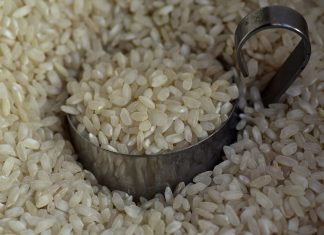What makes a perfect steak? For some, it’s the rich, pink center of a medium rare filet. For others, it’s the crispy, seared crust of a ribeye with just the right amount of fat. But all steak lovers agree on one thing - consistency matters. In the restaurant industry, that’s hard to deliver. Traditional cooking methods leave room for error. Steaks get overcooked, sent back, or worse - served dry and flavorless. That’s why a growing number of restaurants are turning to sous vide steak. This precision method uses vacuum sealing and water bath cooking to take the guesswork out of steak preparation. It delivers exact temperature control, perfect texture, and rich flavor every time. For chefs, sous vide means fewer mistakes and faster service. For diners, it means steak that hits the mark every time. And that’s what keeps customers coming back.
Why sous vide steak? Sous vide means “under vacuum.” To prepare sous vide steak, chefs seal the cut of meat in an airtight plastic pouch. Then they place it in a water bath held at a consistent temperature - usually between 129°F and 134°F for medium rare. The steak cooks slowly and evenly, edge to edge, for up to a few hours. Once finished, it’s quickly seared for texture and served hot. The result? Juicy, tender steak with no gray bands and no guesswork.
This method takes the variability out of cooking. In a busy kitchen, that control is a game changer.
Why Steakhouses Rely on Sous Vide
Restaurants don’t just want good food. They want repeatable success. A steak that’s perfect on Tuesday has to be perfect again on Saturday night. That’s hard to do using only traditional pan-searing or grilling methods. Sous vide makes it possible.
Here’s why steakhouses are turning to sous vide:
- Precise doneness: Whether the customer orders rare or medium well, chefs can match the temperature exactly.
- Moisture retention: The sealed cooking environment traps natural juices. Steaks stay juicy and tender, even after finishing in a hot pan.
- Even cooking: The whole steak cooks at the same temperature. No underdone center. No overcooked edges.
- Less waste: No guesswork means fewer steaks returned to the kitchen. That saves money and protects reputation.
Better Flavor with Less Effort
Sous vide steak also improves flavor. Because the steak cooks in its own juices, the beefy taste intensifies. And because chefs can add herbs, butter, or garlic into the vacuum-sealed pouch, every bite carries those infused notes. These are not afterthoughts. They’re core to the taste experience.
The low, slow cooking process also breaks down connective tissue gently, improving tenderness without drying the meat out. This is especially important for leaner cuts that typically need more attention.
Speed and Efficiency at Scale
Efficiency matters in a restaurant. Kitchens must balance quality and speed during peak hours. Sous vide helps with that too.
Many chefs prepare steaks sous vide ahead of time and refrigerate them. During service, they can reheat the steaks quickly in a warm water bath, sear them, and serve. This drastically cuts down on cook times during rush hours and boosts table turnover without sacrificing quality.
Restaurants also reduce prep errors. Line cooks don’t have to monitor doneness or worry about burning a steak. That consistency reduces stress and helps new kitchen staff perform like veterans.
Not Just for High-End Kitchens
Sous vide steak is not limited to white-tablecloth restaurants. Fast-casual and mid-range eateries are using the same techniques to upgrade their steak offerings. Diners are more educated than ever. They expect better food at every price point. Sous vide lets restaurants meet those demands without raising costs or training requirements.
It also lets them do more with less. Because steaks come out perfect every time, restaurants can serve a better product without depending on high-skill labor or costly cuts.
The Secret Behind the Scenes
There’s a secret to how many restaurants make this work: they partner with a sous vide company like Cuisine Solutions. These experts supply pre-cooked sous vide steaks made to exacting standards. Their chefs use scientific precision to deliver steaks that are tender, juicy, and full of flavor. Restaurants simply finish them in a pan or on the grill. It’s fast, foolproof, and consistent.
This partnership takes pressure off the kitchen while ensuring every steak meets customer expectations. For restaurants, it’s a smart way to offer high-quality dishes without increasing staff load or risk. For diners, it means every steak arrives hot, tender, and perfectly cooked - without compromise.
Why Diners Should Care
You might not think about the process behind your favorite steak. But understanding how it’s made changes how you experience it. If a restaurant uses sous vide, that’s a good sign. It means the chef cares about consistency, safety, and quality.
Sous vide cooking also protects flavor and nutrients better than other methods. It avoids high-heat exposure that can dry out the meat or degrade the taste. Every bite reflects the original quality of the cut.
Knowing your steak was cooked sous vide should give you confidence - not just that it’s safe to eat, but that it’s going to be one of the best meals of the night.
The next time you cut into a steak at your favorite restaurant and it’s perfectly pink from edge to edge, remember - it’s probably not luck. It’s precision. Sous vide steak has become the trusted tool behind the scenes for chefs who refuse to compromise. It reduces waste, improves consistency, and delivers flavor that diners remember. In a world where every plate influences a guest’s decision to return or post a review, that level of control is more than a luxury - it’s a necessity. If you’re a food lover, understanding sous vide helps you appreciate the care behind each bite. If you’re in the restaurant business, it’s a system worth adopting. The method may be simple, but the results are powerful. Quality drives loyalty. Consistency builds trust. Sous vide delivers both. That’s why more chefs - and more restaurants - are turning to it every day. The secret to the perfect steak is no longer a secret.






